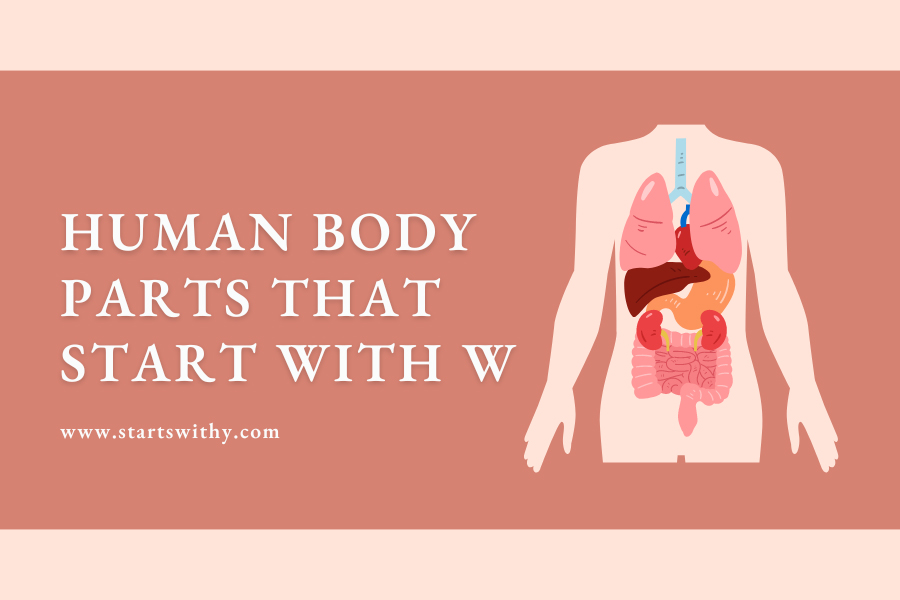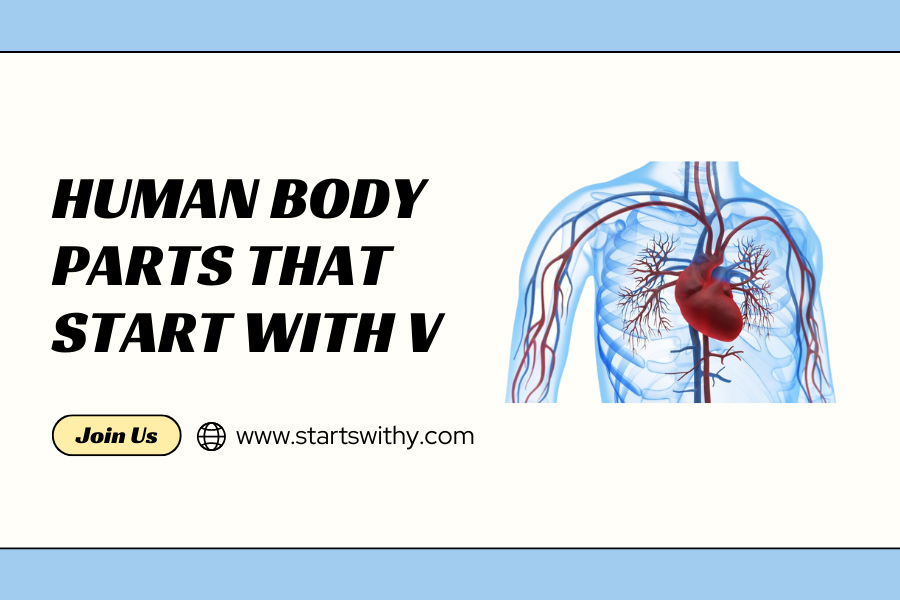Embark on another fascinating voyage through the complexity of the human anatomy in our continuing series. This article, “Body Parts That Start With E”, is an engaging expedition into the components of our bodies beginning with the letter ‘E’. We’ll explore parts from the essential organ, the esophagus, to the sensory wonder that is the eye, providing insightful details about their functions, structures, and unique traits.
This article is a valuable resource for learners, educators, or simply the anatomically curious. Whether you’re a seasoned medical professional or just embarking on your biological journey, join us as we enhance our understanding of the human body, one letter at a time.
Human Body Parts That Start With The Letter E
The exploration of the human body is an unending journey, filled with discoveries and fascinating insights. As we continue our voyage through the alphabet of human anatomy, we arrive at “E,” a letter that heralds several vital body parts. In this article, we will elaborate on these body parts that start with “E,” taking you on an enlightening expedition into their characteristics, functions, and the essential roles they play in our overall health.
Ears

The ears are complex organs tasked with the critical functions of hearing and maintaining balance. Comprised of the outer, middle, and inner ear, they convert sound waves into electrical signals that our brain can interpret. Moreover, the inner ear contains a delicate system – the vestibular system – that helps us maintain our balance.
Epidermis

The epidermis is the outermost layer of our skin, acting as a barrier against the outside world. It helps protect the body from harmful substances and pathogens and regulates the amount of water released from the body. This layer of skin is also where you’ll find melanocytes – cells that produce melanin and give our skin, hair, and eyes their color.
Esophagus
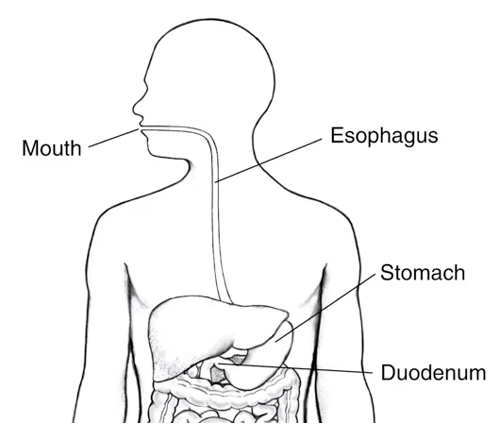
The esophagus is a muscular tube connecting the throat (pharynx) to the stomach, serving as a conduit for food and liquids. Upon swallowing, the esophagus uses its muscular walls to actively push the food down into the stomach, a process called peristalsis.
Eyes
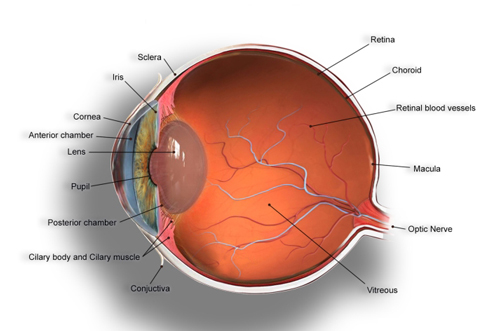
The human eyes are the body’s visual system, allowing us to perceive our surroundings. They work by refracting light that enters them and focusing it onto the retina at the back of the eye. The retina contains photoreceptor cells (rods for light/dark vision, cones for color vision) that convert light into electrical signals, which are then sent to the brain via the optic nerve.
Elbow
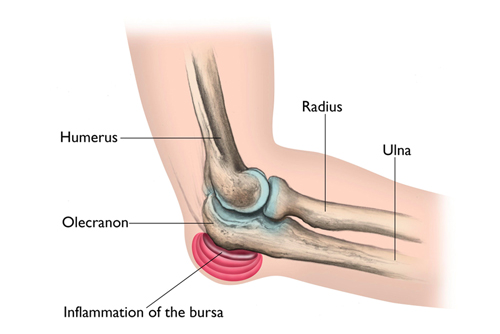
The elbow is a hinge joint located in the middle of the arm, connecting the upper arm bone (humerus) with the two bones of the forearm (radius and ulna). The elbow allows for bending and straightening (flexion and extension) and twisting (pronation and supination) of the arm, making it crucial for many of our daily physical activities.
Endocrine Glands
The endocrine system is composed of a network of glands that produce and secrete hormones directly into the circulatory system. These hormones regulate various bodily functions, including metabolism, growth and development, tissue function, reproduction, sleep, and mood, among others. Examples of endocrine glands include the pituitary gland, thyroid gland, adrenal glands, and the pancreas.
Erythrocytes

Erythrocytes, also known as red blood cells, are the most common type of blood cell. Their primary function is to transport oxygen from the lungs to the body’s tissues and then carry carbon dioxide back to the lungs to be exhaled. Erythrocytes contain a protein called hemoglobin, which binds to oxygen and gives the cells (and blood) their red color.
Epiglottis

The epiglottis is a leaf-shaped flap of cartilage located at the base of the tongue, at the top of the larynx. It functions as a switch between the trachea (windpipe) and the esophagus, ensuring that food and drink are directed down the correct tube when we swallow. When breathing, the epiglottis stands upright to allow air into the windpipe; when swallowing, it folds flat to prevent food from entering the airway.
Ear Ossicle: Tiny Titans of Sound

Imagine a trio of delicate bones amplifying sound vibrations within your ear – that’s the wonder of the ear ossicles. These minuscule marvels, the smallest bones in the human body, play a crucial role in transmitting sound waves from the eardrum to the inner ear.
Ear ossicles malleus, incus, stapes labeled and positioned within the middle ear
- Bone Bandits: The three ossicles are named for their shapes:
- Malleus (Hammer): Connected to the eardrum, it transmits vibrations to the next bone.
- Incus (Anvil): Receives vibrations from the malleus and relays them to the third bone.
- Stapes (Stirrup): Amplifies the vibrations and transmits them to the inner ear, stimulating the auditory nerve.
- Amplifying Wonders: The ossicles work together like a tiny lever system, multiplying the force of sound waves by 20 to 30 times. This amplification is crucial for us to hear sounds clearly, from whispers to loud sirens.
- Protecting the Precious: The ossicles are nestled within the middle ear, protected by the eardrum and surrounded by air-filled spaces. This delicate environment ensures their optimal functioning and protects them from harm.
Elbow Region: Bending Beauties
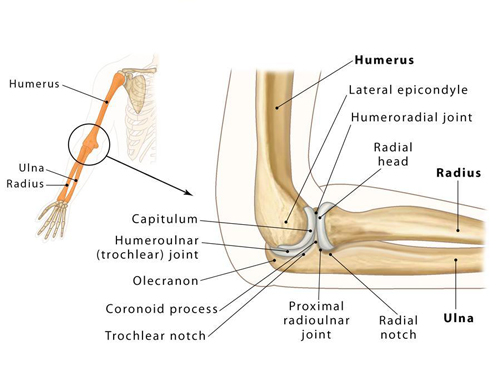
Imagine a hinge joint allowing you to grab, throw, and hug – that’s the magic of the elbow region. This intricate network of bones, muscles, and ligaments enables us to bend and straighten our arms, performing countless everyday tasks with remarkable flexibility and control.
Elbow region showing the humerus, ulna, radius, major muscles, and ligaments
- Bone Builders: Three bones come together to form the elbow joint:
- Humerus: Upper arm bone, connecting the elbow to the shoulder.
- Ulna: Larger forelimb bone, forming the inner part of the elbow joint.
- Radius: Smaller forelimb bone, rotating around the ulna and forming the outer part of the elbow joint.
- Muscle Mashup: Numerous muscles control elbow movement:
- Biceps brachii: Flexes the elbow, bending the forearm towards the upper arm.
- Triceps brachii: Extends the elbow, straightening the forearm.
- Other muscles: Brachialis, supinator, pronator teres, and others contribute to various movements and stabilize the joint.
- Ligament Lifeline: Strong ligaments hold the bones of the elbow joint together and prevent excessive movement. They ensure stability and control during various activities, from writing to weightlifting.
Ethmoid Air Cells: Lightening the Load
Imagine honeycomb-like chambers within your skull, reducing its weight and providing space for nerves – that’s the wonder of the ethmoid air cells. These tiny air pockets nestled within the ethmoid bone play a crucial role in our skull’s structure and function.
Ethmoid bone showing the location and structure of the ethmoid air cells
- Airborne Advantage: The ethmoid air cells are filled with air, reducing the overall weight of the skull and making it lighter to carry. This is especially important for balance and head movement.
- Nerve Nooks: The ethmoid air cells also create space for the passage of olfactory nerves, responsible for our sense of smell. These nerves travel from the nose to the brain through tiny openings within the ethmoid bone.
- Drainage Duo: The ethmoid air cells are connected to the nasal cavity and sinuses, allowing for drainage and preventing the buildup of mucus and bacteria. This connection also contributes to the resonance of our voice and influences the sounds we make.
Expiration: Powering the Pause

Imagine a silent symphony within your chest, pushing air outward to refresh your body – that’s the magic of expiration. This often-overlooked process plays a crucial role in every breath we take, eliminating waste gases and making room for fresh oxygen.
Human respiratory system showing lungs, diaphragm, and the direction of airflow during expiration
- Muscular Maestro: While inhalation relies on the diaphragm’s contraction, expiration is primarily a passive process. As the diaphragm relaxes, the elastic recoil of the lungs and surrounding tissues passively pushes air out.
- The Power of Pause: Don’t underestimate the importance of a good exhale! Regular, deep exhalations help lower blood pressure, reduce stress, and improve lung function. Practices like yoga and meditation often emphasize purposeful exhalations for their calming and centering effects.
- Breathing Buddies: Several muscles can assist in forceful expiration, such as the intercostal muscles between the ribs, the abdominal muscles, and the internal oblique muscles. These muscles contribute to coughing, deep sighing, and other actions requiring a more powerful exhalation.
Extensor Muscles: Straighteners with Strength
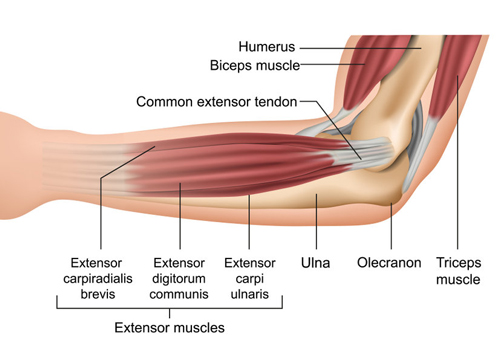
Imagine a network of invisible strings pulling your bones to extend and straighten – that’s the wonder of extensor muscles. These powerful heroes work in opposition to flexor muscles, enabling us to push, pull, and perform countless movements with remarkable control.
Arm showing major extensor muscles labeled: triceps brachii, extensor carpi radialis longus, extensor carpi ulnaris
- Muscle Mashup: Extensor muscles are found throughout the body, each with a specific function:
- Arm Extensors: Triceps brachii on the back of the upper arm straightens the elbow, while extensor muscles in the forearm control wrist and finger extension.
- Leg Extensors: Quadriceps femoris on the front of the thigh straighten the knee, while hamstrings on the back of the thigh contribute to knee extension and hip extension.
- Back Extensors: Muscles like the erector spinae run along the spine and help straighten the back and maintain good posture.
- Power and Precision: Extensor muscles work in coordination with flexor muscles to provide balanced movement and control. Their strength allows us to push off the ground when walking, climb stairs, throw objects, and perform countless other activities.
- Maintaining Movement: Stretching regularly, engaging in strengthening exercises, and practicing good posture can help prevent extensor muscle tightness and keep your body moving smoothly.
Extensor Retinaculum: Hand Hero for Dexterity
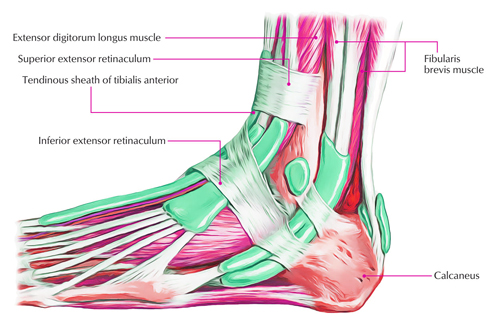
Imagine a hidden bridge holding your hand tendons in place, enabling smooth finger movement – that’s the role of the extensor retinaculum. This fibrous band on the back of the wrist plays a crucial role in hand function, providing stability and support for various gripping and manipulating actions.
Hand showing the extensor retinaculum and its location on the back of the wrist
- Band-aid for Dexterity: The extensor retinaculum anchors the tendons of the extensor muscles in the forearm, preventing them from bowstringing as they pass over the wrist. This stable environment allows for precise finger extension and controlled hand movements.
- Tunnel Vision: The extensor retinaculum forms a tunnel-like structure alongside the carpal bones (wrist bones). This carpal tunnel houses tendons and nerves supplying the hand, providing protection and smooth passage.
- Keeping it Comfortable: Carpal tunnel syndrome can occur when the tendons and nerves within the carpal tunnel become compressed. This can lead to tingling, numbness, and pain in the hand and wrist. Maintaining good posture, avoiding repetitive hand movements, and stretching exercises can help prevent this condition.
Enamel

Tooth enamel is the hard, outer surface layer of our teeth that serves as protection against decay. It’s the hardest substance in the human body and enables our teeth to withstand the pressure of biting and chewing. Despite its strength, tooth enamel can be damaged by bacteria (causing cavities) and worn down over time (eroding).
Epididymis
The epididymis is a tightly coiled tube situated at the back of the testicles in males. It is a crucial part of the male reproductive system, providing the space and environment for the maturation of sperm cells after they leave the testes. Matured sperm are stored in the epididymis until ejaculation.
List of Human Body Parts Starting with E
| Ear | Ear Ossicle | Elbow Region |
| Epigastric Arteries | Esophagus | Ethmoid Air Cells |
| Ethmoid Air Cells, Dry Bones | Ethmoid Air Cells, Openings | Ethmoid Bone |
| Expiration | Extensor Muscles | Extensor Retinaculum |
| Extra-Ocular Oblique Muscles | Extra-Ocular Rectus Muscles | Extrinsic Muscles Of Hand |
| Eye | Epidermis | Elbow |
| Endocrine Glands | Erythrocytes | Epiglottis |
| Enamel | Epididymis |
Conclusion
The exploration of body parts that start with “E” introduces us to several structures vital for our existence, health, and well-being. From the complex functions of our ears to the protective capabilities of our epidermis, these parts underline the phenomenal intricacy of our bodies. As we continue to delve into the wonder of human anatomy, we further our understanding of the delicate interplay between different body parts and systems, emphasizing the marvel of the human body.
Human Body Parts That Start With
A | B | C | D | E | F | G | H | I | J | K | L | M | N | O | P | Q | R | S | T | U | V | W

